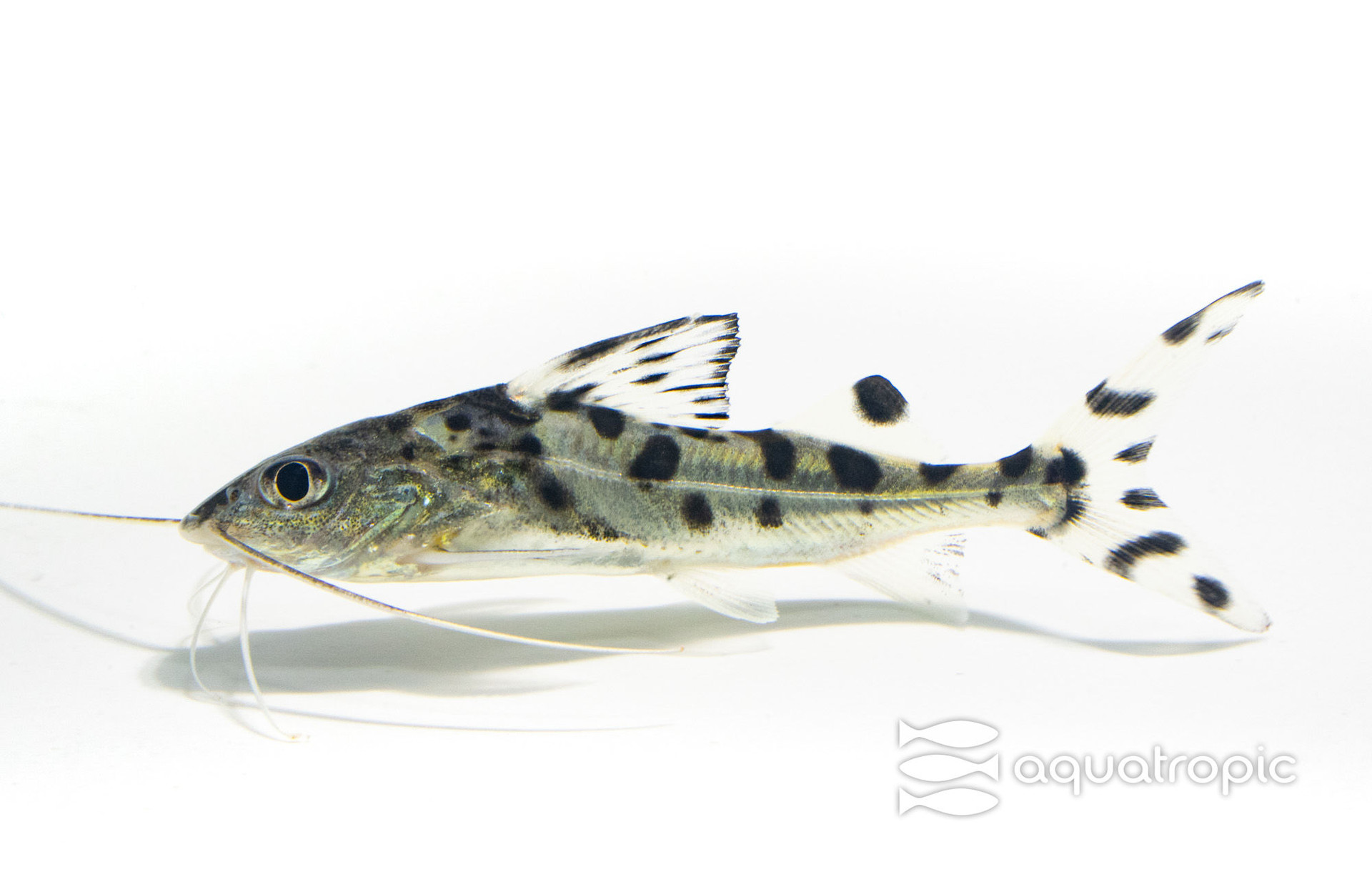The Not-So-Picky Pictus

The Pictus Cat (Pimelodus pictus) belongs to the family Pimelodidae also known as the “long whiskered catfish”. The name Pimelodus pictus is Greek, the pictus describing their spots as “painted”. Their sleek, fine-scaled body is silver with black spots which their name “pictus” is in reference to. Pictus cats also have barbed spines on their pectoral and dorsal fins. Be careful of these when handling your fish and consider using rubber nets to catch or move them. Their unique dalmatian spot pattern is perfectly matched with their constant activity and whiskers almost as long as their body make this a very showy fish!
Native to South America, they are found in the Amazon & Orinoco river basins. They come from smaller rivers and streams where schools of them cruise in the open sandy river bottom making quick work of any morsels of food coming downstream. Fast and agile, they are used to some obstructions (flooded forest habitat – driftwood, rocks, plants etc) but a large open sandy area should be maintained for them. Clean, flowing water with high oxygenation is likely the best setup to emulate this environment, with some pieces of driftwood for shelter.
Pictus cats can grow over four inches long, are highly active, and social animals. We recommend that you keep them in groups of five or more, which will allow you to see their full social nature. Because of this an aquarium of at least four feet in length should be considered – a 75 gallon tank would be considered a minimum for a fully grown fish – a larger 120 gallon tank could be a stunning display for a small group! Their busy nature and fast movement tends to favor a more open lay out. Your small school will enjoy swimming into some flow, so adding a spray bar, powerhead, or circulation pump of some kind is a good idea to allow them some exercise and play. Tankmates should be fish that wont be bothered by their vigorous swimming, or small enough for them to eat. Anything that can fit into their mouth could turn into a snack. Their long whiskers can be a target for nippy fish if they can swim fast enough to catch them, so try to avoid anything that might be tempted to bite them. Larger peaceful fish will be ideal tankmates for your pictus shoal.
Pictus cats are voracious scavengers eating anything that comes down stream to them. They use their sleek form and speed to gobble up any morsels quickly – watching them feed in a large group is not unlike watching a frenzy of piranhas! Most of their food in the wild would come in the form of insects and other invertebrates, but small pieces of fish or fish based food would also be acceptable for larger pictus cats. Offer them a variety of pellets, frozen foods like shrimp, blood worms or any other small invertebrate food and they will put on a show for you!
Very little is known about captive spawning of Pictus cats, most likely due to the fact that people often keep them singly, or not in a large enough aquarium for them to reach full size. A group of Pictus cats would require an aquarium of more than 120 gallons, and while a stunning display, such views are usually only found in public aquaria. It is likely that this egg laying species could be triggered in the same way as many other South American fish with a simulation of a hot, dry season, followed by big water changes with cool water to emulate the rainy season. Anyone who notices spawning behavior should share this information online – you could be one of the first!
The active, whiskered, shark like Pictus cat makes a hardy attractive aquarium specimen. Their enthusiastic feeding makes them fun to watch and easy to care for. Give them the space, and habitat they need and you will be rewarded with a school of mini-sharks for your South American river tank for years to come!